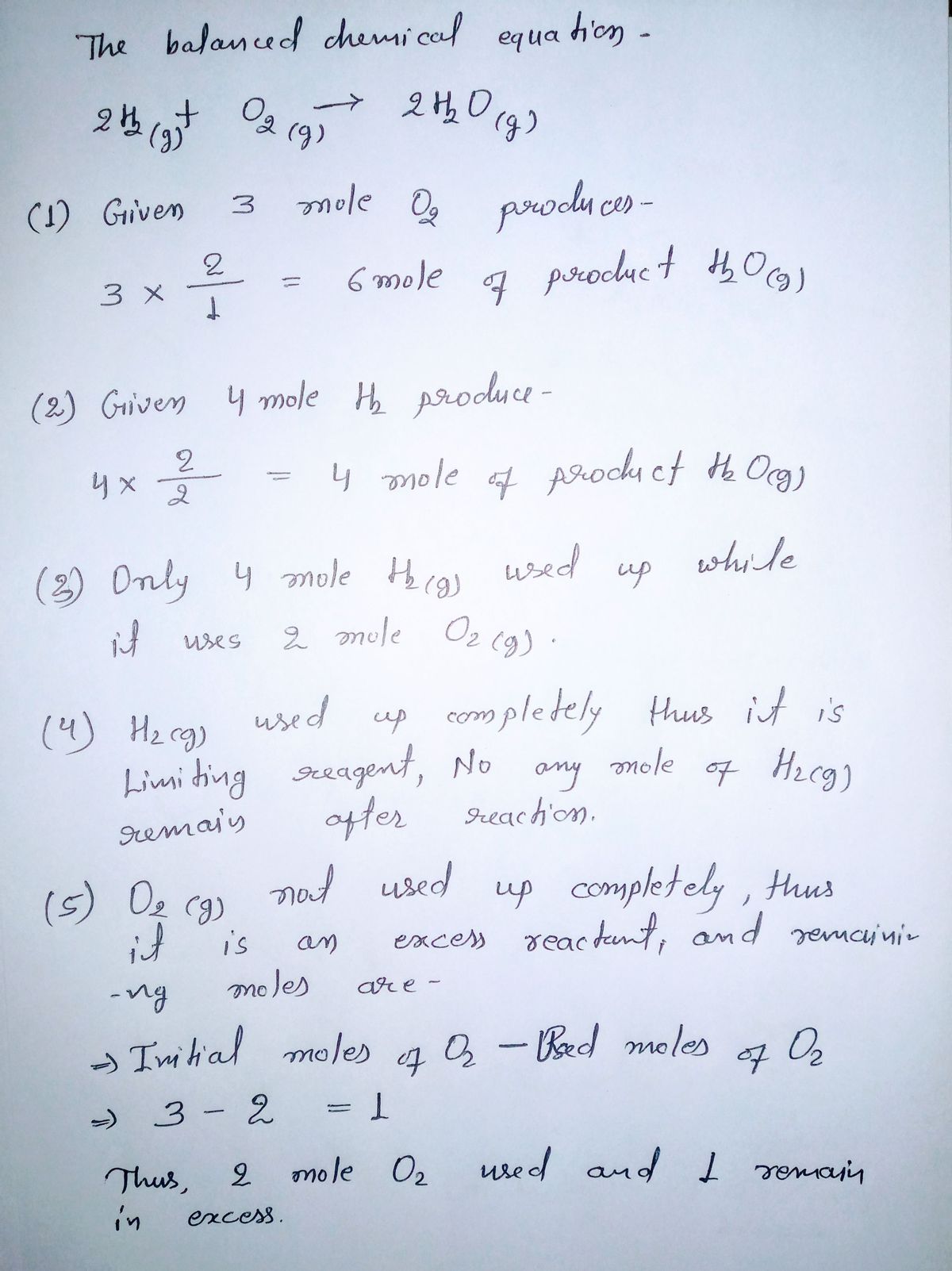CLUE Curriculum Swamy Florida International University Name: PID: How many moles of product will be formed from the amount of O; present? Show your work. How many moles of product will be formed from the amount of H: present? Show your work. Will both O; and H; be used up completely? Explain. Which is the limiting reagent? Why? Explain your reasoning. Which reactant is in excess and by how much? Explain your reasoning. Does figure B represent what you calculated? Why or why not? If not how would you change it (draw your figure in the space provided below)?
CLUE Curriculum Swamy Florida International University Name: PID: How many moles of product will be formed from the amount of O; present? Show your work. How many moles of product will be formed from the amount of H: present? Show your work. Will both O; and H; be used up completely? Explain. Which is the limiting reagent? Why? Explain your reasoning. Which reactant is in excess and by how much? Explain your reasoning. Does figure B represent what you calculated? Why or why not? If not how would you change it (draw your figure in the space provided below)?
Chemistry
10th Edition
ISBN:9781305957404
Author:Steven S. Zumdahl, Susan A. Zumdahl, Donald J. DeCoste
Publisher:Steven S. Zumdahl, Susan A. Zumdahl, Donald J. DeCoste
Chapter1: Chemical Foundations
Section: Chapter Questions
Problem 1RQ: Define and explain the differences between the following terms. a. law and theory b. theory and...
Related questions
Question
Please help me complete this

Transcribed Image Text:12:48
Done Wksht+1.21+LR+and+percent+yi...
Model 3
Consider the following equation
Н: (g) +
O2 (g) →
Н-О (g)
B
HH
CLUE Curriculum Swamy
Name:
Florida International University
PID:
How many moles of product will be formed from the amount of O2 present? Show your work.
How many moles of product will be formed from the amount of H2 present? Show your work.
Will both O, and H2 be used up completely? Explain.
Which is the limiting reagent? Why? Explain your reasoning.
Which reactant is in excess and by how much? Explain your reasoning.
Does figure B represent what you calculated? Why or why not? If not how would you change it
(draw your figure in the space provided below)?
Expert Solution
Step 1

Step by step
Solved in 2 steps with 2 images

Recommended textbooks for you

Chemistry
Chemistry
ISBN:
9781305957404
Author:
Steven S. Zumdahl, Susan A. Zumdahl, Donald J. DeCoste
Publisher:
Cengage Learning

Chemistry
Chemistry
ISBN:
9781259911156
Author:
Raymond Chang Dr., Jason Overby Professor
Publisher:
McGraw-Hill Education

Principles of Instrumental Analysis
Chemistry
ISBN:
9781305577213
Author:
Douglas A. Skoog, F. James Holler, Stanley R. Crouch
Publisher:
Cengage Learning

Chemistry
Chemistry
ISBN:
9781305957404
Author:
Steven S. Zumdahl, Susan A. Zumdahl, Donald J. DeCoste
Publisher:
Cengage Learning

Chemistry
Chemistry
ISBN:
9781259911156
Author:
Raymond Chang Dr., Jason Overby Professor
Publisher:
McGraw-Hill Education

Principles of Instrumental Analysis
Chemistry
ISBN:
9781305577213
Author:
Douglas A. Skoog, F. James Holler, Stanley R. Crouch
Publisher:
Cengage Learning

Organic Chemistry
Chemistry
ISBN:
9780078021558
Author:
Janice Gorzynski Smith Dr.
Publisher:
McGraw-Hill Education

Chemistry: Principles and Reactions
Chemistry
ISBN:
9781305079373
Author:
William L. Masterton, Cecile N. Hurley
Publisher:
Cengage Learning

Elementary Principles of Chemical Processes, Bind…
Chemistry
ISBN:
9781118431221
Author:
Richard M. Felder, Ronald W. Rousseau, Lisa G. Bullard
Publisher:
WILEY